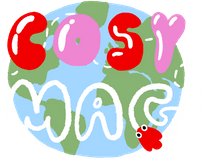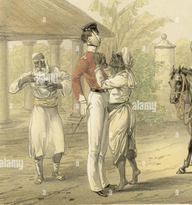Not even a year after the tragic killing of Daniel Prude at the hands of Rochester police, the City of Rochester released bodycam footage of police officers restraining, handcuffing, and pepper spraying a 9-year-old girl. This incident is shocking and horrific. And it leads to several pressing questions, the most critical being: Why did adult, trained, police officers, thinks it was okay to pepper spray a 9-year-old?
To understand this event, it must be placed into our social and historical context. The ways these officers treated this child can be traced to a social foundation created at the intersection of racism, sexism, and ableism that sees young, Black girls in a very different light than their peers.
On January 29th, the police were called for a ‘family disturbance’, noting a girl was distressed. A total of nine Rochester police officers arrived intending to transfer the girl to a mental health care facility. The girl did not want to be restrained and sent to a hospital, so she tried to get away. In that process, this 9-year-old fell onto the snowy ground, was forced into a police car covered with cold snow, and was told: “This is your last chance or pepper spray is going in your eyeballs.” And then they followed through with the threat.
Nine adults — trained police officers — resorted to pepper-spraying a 9-year-old girl.
“Officer, please don’t do this to me”, she cried.
“You did it to yourself, hon,” the officer in the front seat replies.
We have been in a critical cultural moment where, as a nation, we are reckoning with police violence against our Black community members. Most of this attention has focused on unarmed Black men. Increasingly, we are recognizing the role mental health plays, such that up to half of all police killings involve a mental health concern. Both racism and ableism (the discrimination against people with disabilities, including mental health disabilities) are central to this girl’s traumatic experience. But in this case, especially, we have to examine how sexism further shapes this racism and ableism.
“It’s burning too bad,” the girl says.
“It’s supposed to burn. It’s called pepper spray,” an officer responds.
The wave of awareness about police violence that began last summer has taught the world that Black men are seen as more violent and more likely to be guilty (think of George Floyd, Rayshard Brooks, Ahmaud Arbery — all killed in 2020). Further, Black boys are often perceived as older than they actually are (think of Mike Brown, Tamir Rice) and are six times more likely to be killed by police than their white peers. And while we are starting to also bring attention to Black women facing police violence (think of Breonna Taylor, Sandra Bland, Atatianna Jefferson), we haven’t quite started to understand how Black girls are being impacted.
A report by Georgetown Law’s Center on Poverty and Inequality on Black girl childhood concludes that “adults view Black girls as less innocent and more adult-like than their white peers.” Black girls are seen as needing less support and protection, as being more independent, and knowing more about sex and other adult topics. Adults often describe Black girls as “loud”, “very mature”, and “controlling for their age.” The result is that they experience harsher punishment in school and, as this story shows, in the community.
Relying on the work of Dr Priscilla Ocen, the report also describes how this perspective is linked to slavery, in which Black children were disassociated with typical aspects of childhood, like play and exploration. Legacies of this dehumanization continue to impact children.
The resulting process of ‘adultification’ robs young Black children of their childhood, and, sometimes, their lives.
“Stop acting like a child” one of the Rochester officers said.
“I am a child” She cried.
I’ve written before about how racism and ableism are implicated in police violence. About how, for Black men and women, this dangerous combination of prejudice starts in schools and extends into adulthood along a path I call the “special education to prison pipeline.”
While it’s true that we are in a moment when cities and municipalities are creating alternatives to police to respond to mental health crises, as this event shows, this isn’t enough. The way this call was coded — again, as a ‘family disturbance’ and not a ‘mental health crisis’ — led to police responding instead of the city’s Person in Crisis (PIC) or Forensic Intervention Team (FIT).
These police alternatives are great and should be more fully supported, funded, and developed. But we can’t think that these teams are the sole solution to the problem. Having these teams paired with good police training on de-escalation and mental and behavioral health is better, but still not the best solution. We need to identify and address the needs of community members at risk for police violence and develop strategies that prevent crises like these from occurring. Families and individuals need good, safe housing; culturally appropriate medical care, including mental health care; good-paying jobs; access to nutritious foods; and well supported and resourced schools.
But we also need to look at changing harmful attitudes towards children of color throughout our communities. We need to have better media representation of Black boys and girls (and men and women), ones that don’t rely on damaging stereotypes. Our teachers need to be more diverse and be trained in how to equitably interact with all students. We need to integrate our neighborhoods, so everyone has equitable access to resources and more personal interactions with people of different backgrounds and identities (see here to explore residential segregation in your town).
The problems we are seeing with policing are reflections of wider, systemic problems. This means the solution can not solely target policing or mental health care. We need to fix our society, eradicate White supremacy, and make our communities more equitable, more just, and more supportive for everyone.















